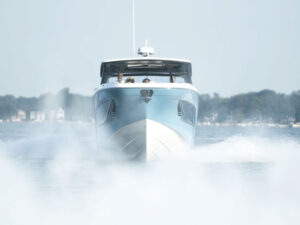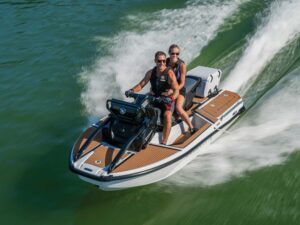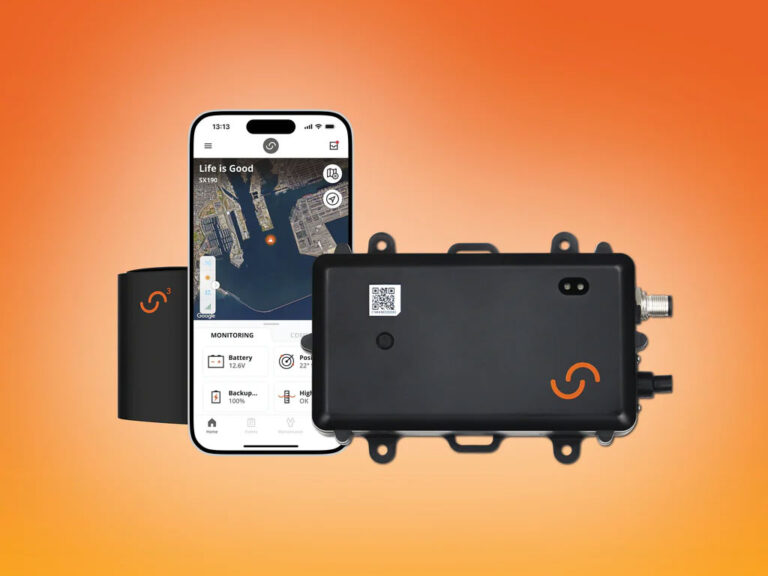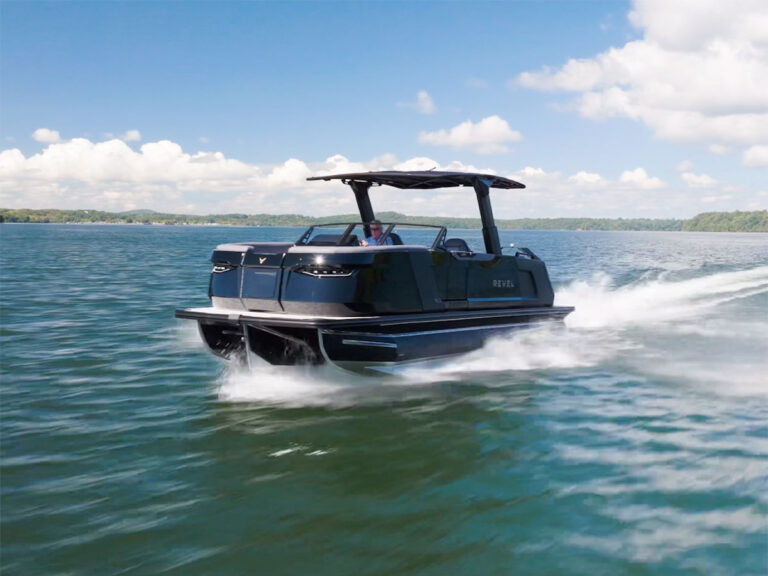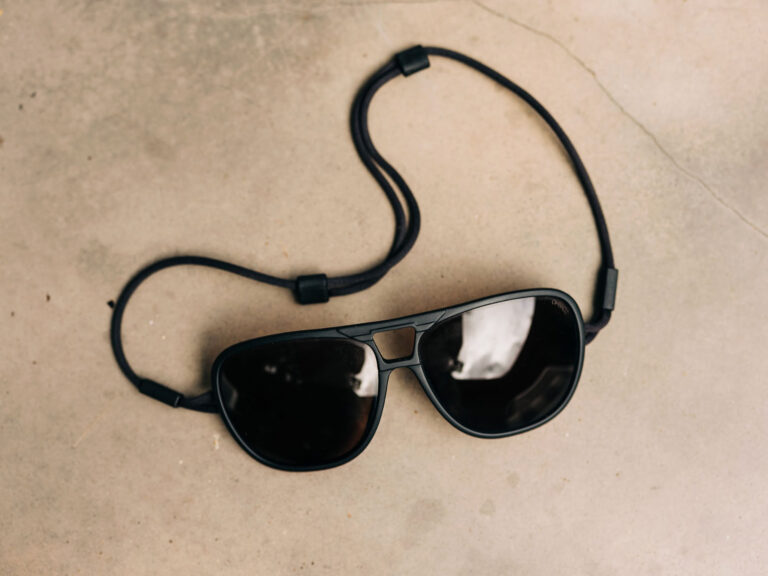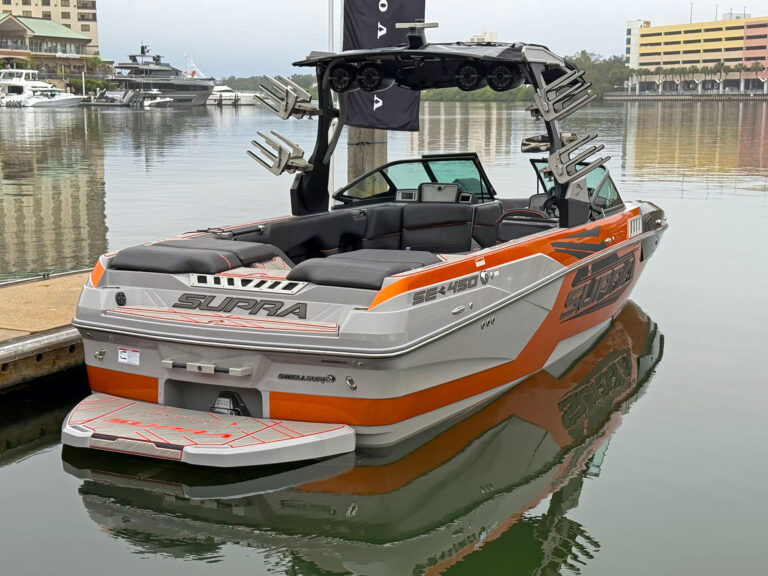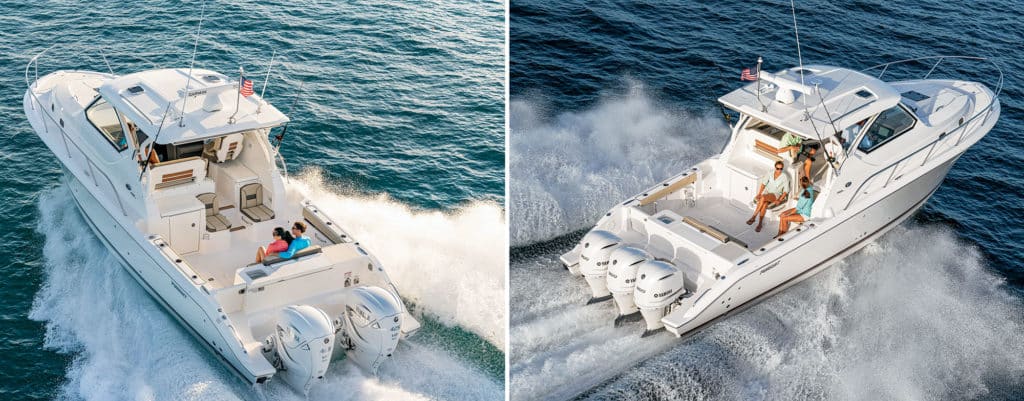
Outboard-powered cruisers have never been more prevalent than they are today, owing largely to the growth of outboard motors themselves. The Yamaha 425 XTO Offshore V-8, for example, stands near the pinnacle of available outboard oomph and technology, and is well-suited for boats such as the Pursuit OS 355, which serves as both a capable cruiser and an offshore fishing machine.
A pair of 425s could supplant a trio of Yamaha F300 V-6s on the transom of the OS 355 (with a dry weight without power of about 15,770 pounds and a maximum horsepower rating of 900), and reduce the rigging, complexity, maintenance and drag created by the propulsion system. Yet how do these two outboard configurations compare in real-life performance?
“We wanted to know the answer,” says Chris Gratz, director of engineering for Pursuit Boats. “So, we decided to compare performance data for two OS 355s, one with twin Yamaha 425 XTOs and another with triple F300s.” Both boats were propped by Pursuit for optimum performance, the 425s sporting 17-inch-pitch Yamaha XTO three-blade stainless-steel wheels, while the F300 spun 18-inch Yamaha Saltwater Series II three-blade stainless props.
We should point out that these trials took place on different days under different sea and atmospheric conditions, variables that may account for some differences in performance.

Top Speed
Let’s jump to the speed race. The triple F300s won, posting a top speed of 51 mph versus the twin 425s at 47.6 mph. Both turned 5,900 rpm at wide-open throttle. Why the difference? While the trips suffered the extra drag of a third lower unit, they possessed a 50 hp advantage. Collectively, they also weigh about 400 pounds less than the twin 425s. That helps explain the 3.4 mph difference at top-end.
Acceleration
Again, the 300s won when it came to zero-to-30 mph acceleration time, beating the twin 425s by about two seconds—9.7 seconds for the trip 300s versus 11.6 for the twin 425s. Here, the extra blade area of three propellers—plus 50 extra ponies and a weight advantage—helped propel the OS 355 out of the hole and onto plane faster.

Fuel Efficiency
When it comes to miles per gallon, it’s a draw. Both outboard configurations achieved 0.98 mpg at 3,500 rpm, though the triple F300s were about 2 mph faster (26.4 mph) at that rpm than the twin 425 XTOs (24.5 mph). At WOT, both boats posted about the same fuel efficiency—0.65 mpg for the triple 300s versus 0.66 for the twin 425s.
A more practical cruising speed in calm seas for this boat would be around 35 mph, where the triple 300s turn about 4,100 rpm and the twin 425s rev at around 4,300 rpm. At that matching speed, you can expect approximately the same mpg—0.93 from the three F300s and 0.92 from the twin XTOs—based on our extrapolations.
Planing Speed
Having a low minimum planning speed (MPS) can be helpful when seas turn nasty and you have to slog it out. Being able to stay on plane at lower speeds will keep fuel efficiency higher than if you’re plowing the waves at displacement speeds.
“This is certainly dependent on load case,” says Gratz, who points out these numbers were recorded with fully laden vessels and without deploying the trim tabs. In this test, the triple 300s were able to plane at 18 mph, while the twin 425s needed 25 mph to stay on plane. Here again, the extra blade area of three propellers and the lighter weight of the triple 300s account for the lower MPS. However, the triples posted 10 percent poorer fuel-efficiency numbers (0.88 mpg) versus the twin 425s (0.98 mpg) at MPS.
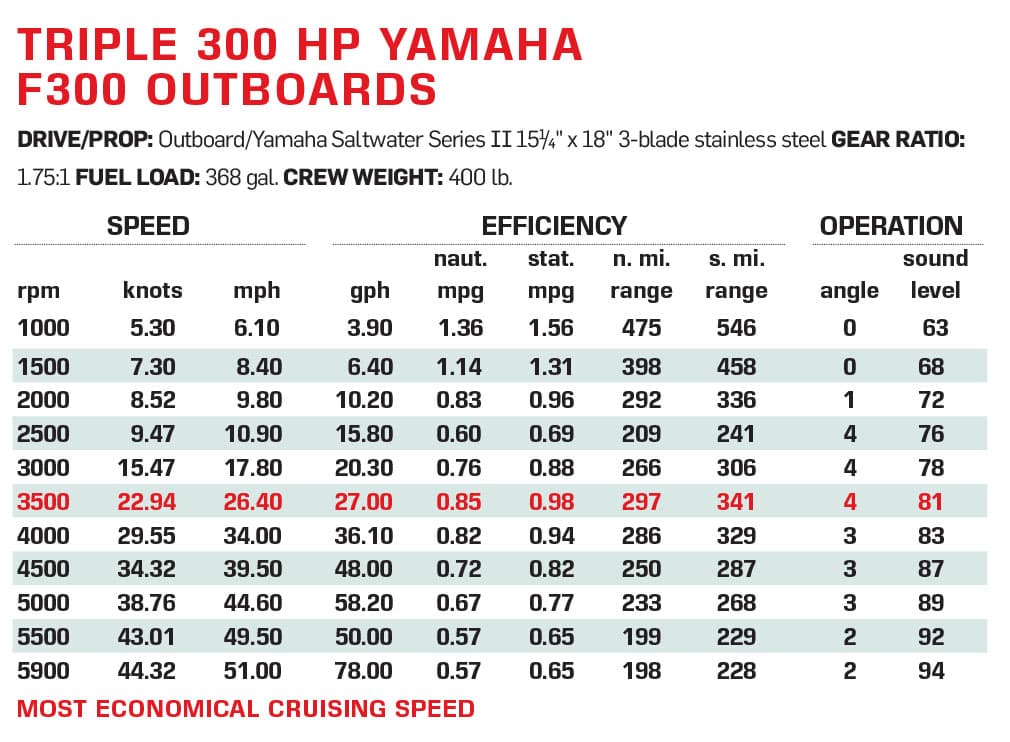
Sound Levels
The twin 425s are a bit noisier versus the triple F300s at comparable rpm levels. At idle, for instance, the 425s emitted 64.5 decibels, while the 300s whispered at 60 db. At 3,500 rpm, the twins posted 85 db, while the triples were at 81. At wide-open throttle, it was 98 db for the 425s versus 94 for the F300s.
Price and Maintenance
While you might think twin 425s would be less expensive than triple 300s, you’d be wrong. The base suggested retail of the OS 355 with the Yamaha 425 XTOs is $27,680 higher than the same boat with three Yamaha F300s. Rack that up to the latest technology in the XTOs, such as direct-fuel injection and integral power steering.
Read Next: Check Out Our Other Versus Articles
Purchase price aside, two outboards should prove less expensive to maintain than three, especially when it comes to oil, lube and filters; the 425 takes about 8 quarts of engine oil versus around six for the F300. So, the twin 425s win when it comes to ease of maintenance.


